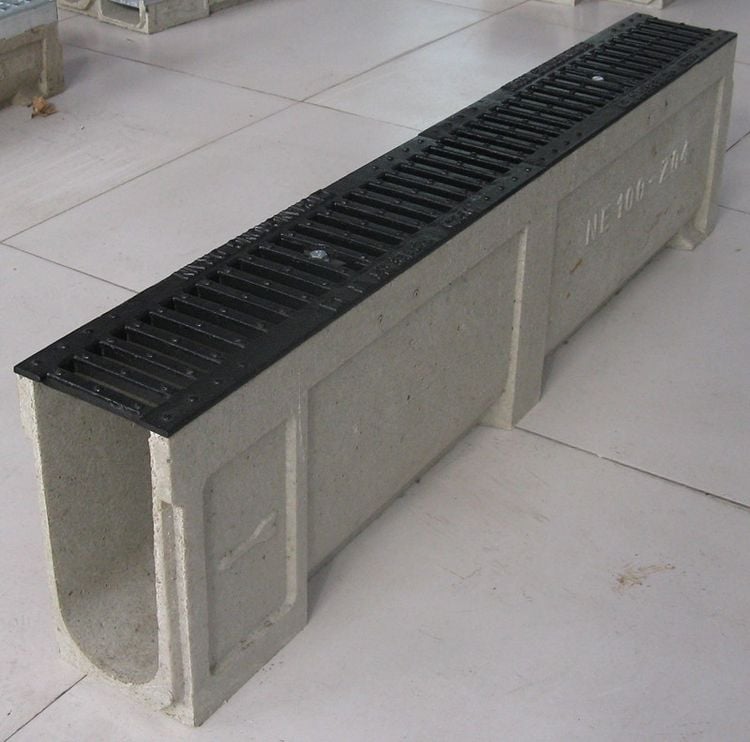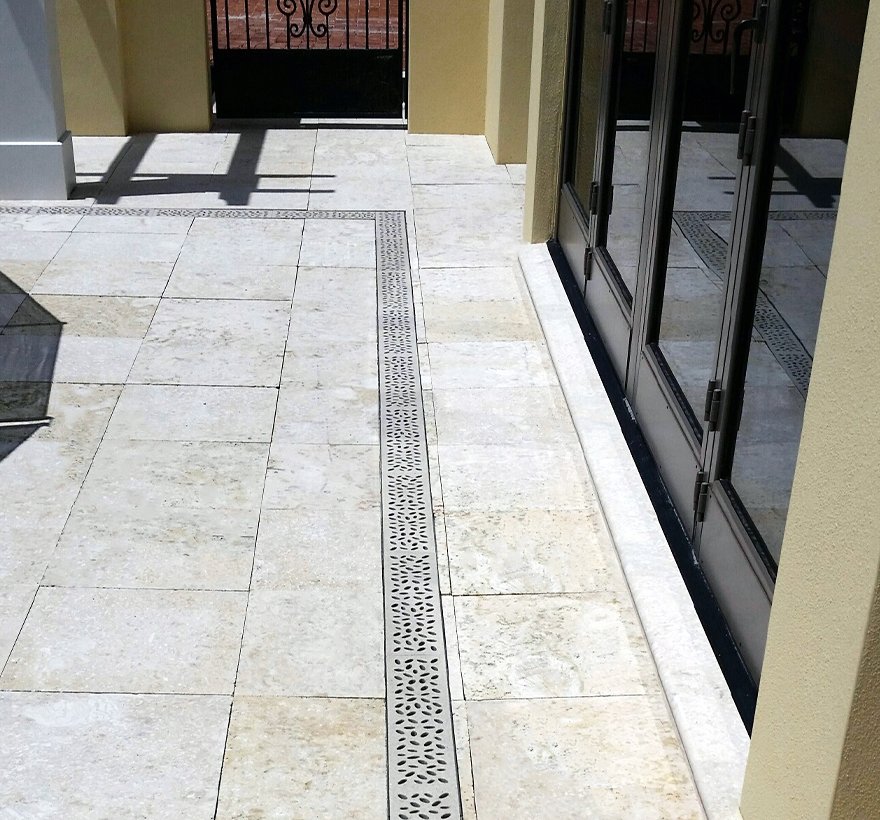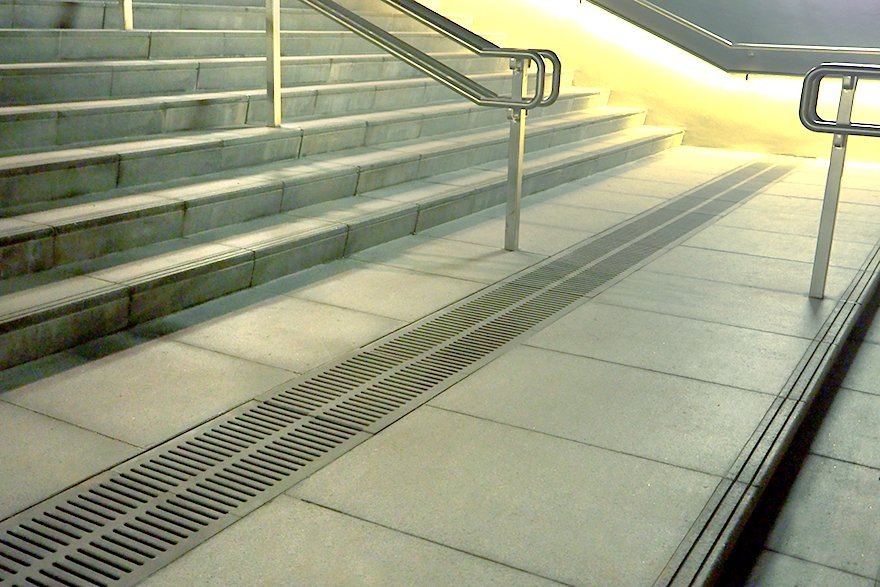It can be a little overwhelming to settle on a particular trench drain system because there are so many options available today. The good news, though, is that when you know what you are looking for, it becomes a lot easier to settle on a trench drain solution that will best suit your needs.
This article will focus on trench drain systems and the considerations that you need to make for them as you plan your project. Here are 5 questions you’ll need to ask yourself as you plan your trench drain systems:
1. What material should you use?
Several different materials can be used to make trench drain systems. In most cases, the material that you eventually choose will depend on the industry that the trench drain is being applied to and the client’s budget.
Every material has its own set of advantages and disadvantages. Plastic is cheap, light, and easy to remove for cleaning. However, it will need to be replaced frequently. Steel is heavier and a lot more expensive than plastic. However, it is also more durable. Other materials fall roughly between these two extremes.
 What do you intend to use the trench drain for? This will influence your choice of material.
What do you intend to use the trench drain for? This will influence your choice of material. 2. How is the surrounding landscape going to affect the project?
Depending on where your trench drain system is going to be set up, you might have to figure out how to deal with various types of debris that could potentially obstruct your flow.
This is one of the reasons why it is very important to always know the plans that are in place for the surrounding landscape before setting off. When trees are planted too close to your drains, not only will you have to deal with shed leaves, but you will also have to design for potential root interference. If your system is located in a parking area with a lot of small stones, this will be the main problem you’ll have to deal with, because the stones could get knocked into your channels and clog up the entire system.
Also, think about the landscape, its slope, and soil composition. These are all things that will affect how you approach your intervention.
3. What will be placed on top of the trench drain system?
The first thing you have to consider when it comes to this is the rest of the landscape on top. You want a system that integrates seamlessly with its surroundings. This can have a huge impact on the overall aesthetics of your project.
Next, the trench drain system you go for must be able to perform the role that is intended for it. How is the space going to be used? For example, while public pools and train stations both have high pedestrian traffic, the nature of this traffic is very different.
Additionally, you need to think about the required rate of flow for the area. This will influence the drainage patterns you choose. Areas that are often water-logged such as water treatment plants will need trench drain systems that are non-slip, high-grip, and barefoot-friendly.
Finally, you need to think about the load requirements. Depending on your project, this may be one of the first or last things you’ll need to consider. Different trench drain systems are designed to take different weights. The goal here is to implement a solution that is appropriate to the kind of traffic that’s going to be experienced in the space.
 The specific load requirements of the space will help determine the trench drain system that should be used. For instance, the solution implemented in this pedestrian-traffic-heavy area would have been different if it had been in a parking garage or aircraft hangar
The specific load requirements of the space will help determine the trench drain system that should be used. For instance, the solution implemented in this pedestrian-traffic-heavy area would have been different if it had been in a parking garage or aircraft hangar4. What is the nature of the liquid that is going to flow through?
This is another important consideration to think about. While most systems are designed for stormwater drainage, they may not perform as effectively when you change the type of fluid flowing through.
You need to consider the nature of the fluid that will be flowing through the system as you make your decisions. Think about extreme cases and how your system will perform in that scenario. How will it perform if the liquid flowing through is extremely hot or cold? Or, in the case of chemical plants, how will it handle the most corrosive chemicals?
If you are designing regular storm drainage solutions, you still need to apply the same line of thinking. How will it perform when exposed to extreme heat or cold? How long would it last?
5. What about the future?
As you install the trench drain system, you need to also plan for future maintenance. Every drainage system needs a maintenance program in place to help them remain effective in the long term.
Seasonal cleanouts and checks can go a really long way in ensuring that your trench drain system serves you well for many years. Plus, in some situations, a trench drain system that does not work as designed becomes hazardous, exposing you to legal troubles. You need to anticipate some of these problems and deal with them before they occur.
Other things to keep in mind
The client’s personal preferences will also come into play as you select your trench drain system. Depending on what your client is like, sometimes, the final decision may be out of your hands, and all you can do is offer your professional advice.
In certain special cases, your project may have to adhere to certain federal or local laws. It is very important that you familiarize yourself with these laws if you do not want to cross swords with the authorities and if you intend to keep everything legal. Federal guidelines will be broad and far-reaching, or very detailed and specific for certain sensitive projects. On the other hand, each state will have its own set of guidelines and laws that you will have to follow.
 The client’s personal preferences will also come into play as you select your trench drain system. Depending on the client, things like the choice of color and other design features may be out of your hands.
The client’s personal preferences will also come into play as you select your trench drain system. Depending on the client, things like the choice of color and other design features may be out of your hands. Final Thoughts
When it comes to trench drain systems, it is better to plan for too much and have your plans never set in motion than to plan for too little and have to explain why you did not plan enough. At Jonite, we do the bulk of the planning for you by offering quality products that are designed to go above and beyond in terms of performance. Therefore, whenever you use one of our products, you can rest easy knowing that almost all the heavy lifting has already been done for you.
With the tips outlined here, choosing the best trench drain solution for your project should be a little easier. If you still feel a little overwhelmed, all you have to do is reach out to us; our experts will be happy to help you with your decision making!










